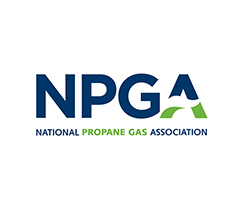Propane industry uniting to block shipping threats
Weather. Energy competition. Consumer conservation. The economy.
The propane industry has faced frequent obstacles in recent years, forcing many marketers to take action, adapt to changing times and discover new ways to grow gallons – or simply survive.
But another issue has been snaking through the industry’s underbelly, with the potential to make business even more difficult for marketers. It attacks propane on the move across the United States. The latest obstacle takes the form of potentially harmful regulatory proposals to propane shipments on the pipeline.
Much of the propane that reaches the retailer and then the end user is first moved to its destination via the pipeline. In fact, about 75 percent of the total propane load is transported by a pipeline-truck combination.
Industry officials say they have seen such an increase in tariff proposals and other activity related to pipelines that action was needed within the National Propane Gas Association (NPGA).
In October 2010, NPGA announced the formation of a pipeline task force, a function of the governmental affairs committee and part of a new task force model also focusing on autogas, energy policy and regulatory/compliance areas. The task forces perform their work with industry experts and report back to the governmental affairs committee, which then reports to the NPGA Executive Committee and the full board of directors.
“The membership felt like the association needed to get more involved,” says Stuart Weidie, president of Blossman Gas and chairman of the governmental affairs committee. “The timing was good, and we were forming these task forces of experts who were members of our industry who could evaluate and participate in issues that affected the industry.”
Pipeline task force activities are based on educating and communicating propane infrastructure matters to regulators, legislators, pipeline companies and propane industry members. Its underlying mission, directed by task force chairman Tom Van Buren of Ferrell North America, is to protect the interests of the propane industry and its customers.
Unified approach
The industry’s list of major successes with pipeline issues goes back to 2004, around the time NPGA first got involved. But industry activities then were specific and limited in scope and objectives.
The fight continues today with a more organized, unified approach through NPGA’s pipeline advocacy program, an outgrowth of the pipeline task force.
The program has been one of the “shining stars” of NPGA advocacy over the last several years, says Phil Squair, senior vice president of public and governmental affairs for NPGA and a staff liaison for the pipeline task force.
One of its most important functions is strengthening the propane industry’s relationship with the Federal Energy Regulatory Commission (FERC), an independent government agency that regulates the interstate transmission of natural gas, oil and electricity. That relationship was nonexistent prior to 2003.
“The pipeline task force realized we needed a strong outreach program to participate with FERC commissioners so they understand our industry,” Weidie says. “One of the things we quickly determined was that FERC commissioners, through the years, heard little, if anything, from our industry. They lacked the knowledge about the workings of the pipeline system as it related to propane.”
That lack of knowledge was detrimental to the propane industry, since FERC and its five commissioners are the only outside agency capable of addressing issues affecting propane shipments on the pipeline, such as rates, surcharges, storage and other operational policies proposed by pipeline owners.
But times are changing.
“We have access to all of the commissioners’ offices. We can arrange a meeting and make our case,” says Squair, adding that great strides have been made with FERC’s awareness of NPGA and propane infrastructure.
Judging, not policing
There are some limitations, however. FERC often acts as a judge in many of the proceedings concerning oil pipelines, as well as shipments of propane, and doesn’t hold the same authority and oversight as it does with natural gas pipelines.
The propane industry cites FERC’s policy of light-handed regulation of oil pipelines as a problem area for propane. Because FERC doesn’t independently examine pipeline proposals on rates, fees and policy changes, the propane industry has become a watchdog and must take its concerns and protests to the commission. The end goal is to ensure pipeline activity is just and reasonable, so propane retailers and their customers aren’t harmed financially as a result.
“The way to participate in the commission is to engage in the process,” Nils Nichols, director in the Division of Pipeline Regulation at FERC, said during a regulatory leaders forum assembled at this year’s Propane Days in Washington, D.C.
Nichols spoke on how the propane industry, specifically NPGA, can affect change when it’s facing issues such as pipeline rate hikes.
“It’s essential you intervene,” he says. “That’s your opportunity to have dialogue with the commission. On big policy issues, it’s beneficial to come in, visit and state your case.”
Three major pipelines are used to ship propane across the country – Dixie in the Southeast, Mid-America in the Midwest and Teppco in the Northeast. In recent years, those key pipelines have come under the ownership of one company – Enterprise Products Partners. Propane industry officials say pipeline consolidation makes this effort even more challenging, as proposals for one pipeline might migrate to another.
“It’s an aggressive, well-run company,” Squair says of Enterprise. “We don’t begrudge them of their ability to go out and pursue their interests to the maximum degree they can. Where our interests align, great. Where they diverge, we’re prepared to take the actions we’ve taken in the past to make sure rates, policies and procedures are just and reasonable.”
Industry involvement
The propane industry has banded together to fight pipeline proposals it feels are unfair. AmeriGas, Ferrellgas, Suburban Propane, CHS and ConocoPhillips, among others, have been strong supporters of the cause.
This past spring, NPGA and 84 other companies and state associations joined a protest against Enterprise Teppco’s large rate increase proposal – one month after FERC had rejected another rate increase attempt. FERC accepted and suspended the second tariff proposal for seven months, until Nov. 16.
The fight to protect propane on the pipeline doesn’t come without a price, much of which is covered by a small group of companies, such as the MLPs and the larger regional players. NPGA’s annual budget for pipeline advocacy is $10,000, but that amount may increase depending on the circumstances. For example, a Mid-America pipeline rate case in 2005 lasted about five years and cost more than $3 million, but the pipeline settled with an estimated value of $27 million to the industry, according to NPGA documents.
“Fortunately, it’s more on the low end,” Squair says of the cost. “It’s a unique area of the law. It requires some energy industry expertise, economic analysis, legal background – the prices accelerate pretty quickly. One of our priorities is to broaden the number of companies involved in our activity so we can spread those costs more effectively.”
















